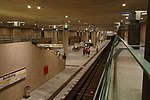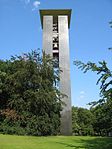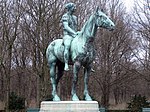Kroll Opera House
1851 establishments in Germany1951 disestablishments in GermanyBuildings and structures demolished in 1951Buildings and structures in Berlin destroyed during World War IICommercial buildings completed in 1844 ... and 6 more
Demolished buildings and structures in BerlinHistory of BerlinMusic in BerlinMusic venues completed in 1851Opera houses in GermanyTheatres in Berlin

The Kroll Opera House (German: Krolloper, Kroll-Oper) in Berlin, Germany, was in the Tiergarten district on the western edge of the Königsplatz square (today Platz der Republik), facing the Reichstag building. It was built in 1844 as an entertainment venue for the restaurant owner Joseph Kroll, and redeveloped as an opera house in 1851. It also served as the assembly hall of the Reichstag from 1933 to 1942. Severely damaged by the bombing of Berlin in World War II and the Battle of Berlin, it was demolished in 1951.
Excerpt from the Wikipedia article Kroll Opera House (License: CC BY-SA 3.0, Authors, Images).Kroll Opera House
Heinrich-von-Gagern-Straße, Berlin Tiergarten
Geographical coordinates (GPS) Address Nearby Places Show on map
Geographical coordinates (GPS)
| Latitude | Longitude |
|---|---|
| N 52.518611111111 ° | E 13.370555555556 ° |
Address
Heinrich-von-Gagern-Straße
Heinrich-von-Gagern-Straße
10557 Berlin, Tiergarten
Germany
Open on Google Maps











